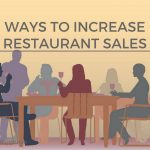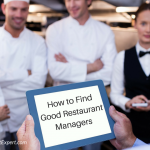Restaurant Prime Cost Formula
The restaurant prime cost formula is the most important calculation in your restaurant. I bet you’ve heard that a typical restaurant makes a nickel to 8 cents on every dollar they bring in. I bet you’ve heard about the study Ohio State University did more than a decade ago where they learned that 60 percent of all restaurants fail within their first 3–5 years of business. I bet you’ve heard that a typical full-service restaurant is supposed to run a 65 percent prime cost. I bet you’ve heard the National Restaurant Association many years ago said that the average full-service restaurant typically runs a 34 percent food cost and a 32 percent labor cost. My goodness! That’s a lot of numbers! And how do they apply to your restaurant?
The truth is… THEY DON’T!
Don’t get me wrong. You need numbers to go by for your restaurant. The challenge I have with benchmarked data is it is all about averages. The average restaurant makes; the average restaurant runs a, the average, etc. Is your restaurant average? How many independent restaurants with different owners do you know that are on the same corner, serve the same food, provide the same style and level of service, serve the same quality products and serve them at the same price point? The answer is NONE! If you’re not the average restaurant, what are benchmarks good for? Absolutely nothing!
Let’s break the numbers down to find your personal benchmark, which is your target prime cost. When I grew up in the business, we referred to prime cost as controllable expenses. There are expenses that are in the direct control of management, such as how they hire, train, schedule and fire staff, and how they purchase and utilize product. For all intents and purposes, these controllable expenses are your management team’s report card. It measures how well they are running the business and the numbers they control. The numbers typically have nothing to do with what you pay for rent, how much you spend on marketing, what your tax bill is, etc. But the numbers can be used to control product and people.
What is the restaurant prime cost formula? The short answer: it’s your total cost of goods sold (to be calculated properly requires weekly or monthly inventories to calculate use because purchases divided by sales are NOT accurate), plus your total labor cost, including taxes, benefits and insurance, then divided by your gross sales (sales before discounts, not including sales tax).
When I first started coaching independent restaurants in 2003, the target prime cost was 65 percent for a full-service restaurant and 60 percent for a quick-service restaurant. But then in 2007 the economy took a major hit. You remember. Before that, after the worst day in modern American history, 9/11, food costs went through a major adjustment and pricing continued to rise. Today there are additional costs and added expenses in our operations that drive potential for profit down, such as rising minimum wages, and you can quickly see that those targets don’t work anymore.
If you have a restaurant that does $850,000 a year or more in gross sales, your new prime cost target is 55 percent or lower! That means for a restaurant that does $1 million a year in sales operating at a 65 percent prime cost, thinking they are doing well, there are 10 points on the table, or $100,000, in bottom-line profitability. This money is available if you are willing to do the work to get it. And the crazy part is the higher your sales, the lower that number can go. Many of our member restaurants operate at 50 percent, 42 percent and even as low as 34 percent! They are achieving these low prime costs without changing product quality or levels of service.
How you get to your prime cost target depends on your financial situation, your core values, what you’re willing to change, and, ultimately, your budget. It all starts with an annual budget which allows you to easily see what needs to be done to achieve these kinds of numbers and then proactively apply systems that change your operation to achieve those numbers. Your budget will ultimately determine where your costs should be.
For example, a family casual full-service restaurant might run a 35 percent cost of goods sold and a 20 percent labor cost. A quick casual burger restaurant might run a 25 percent cost of goods sold and a 30 percent labor cost. A high-end steakhouse might run as high as a 40 percent cost of goods sold and a 15 percent labor cost (a concept called “cash contribution”), and all of these scenarios equal 55 percent. You see? Your targets have nothing to do with industry averages.
Last but not least, with proper budgeting and systems implemented in your business that control your costs, your goal can be a 15-20 percent profit margin!
While running a restaurant can be a numbers game, you don’t want to be playing the game with the wrong numbers. To understand where YOUR numbers should be requires a budget. Achieving those numbers requires implementing systems to achieve and control those numbers. Because here’s the deal: you get to decide which game you play and whether or not you win or lose. Now is the time to decide to change the game and be a winner!
Our software for independent restaurant owners, SMART Systems Pro, makes creating and maintaining systems easy. If you aren’t using SMART Systems Pro to measure and monitor your restaurant prime cost formula, please click here to set up a free consultation. Know your numbers and your profits will go up!
To learn more about the restaurant prime cost formula and how to reach it in your restaurant, read our special report, Breaking Away from the Insanity: How to easily take control of your restaurant and make more money. Download it here.





